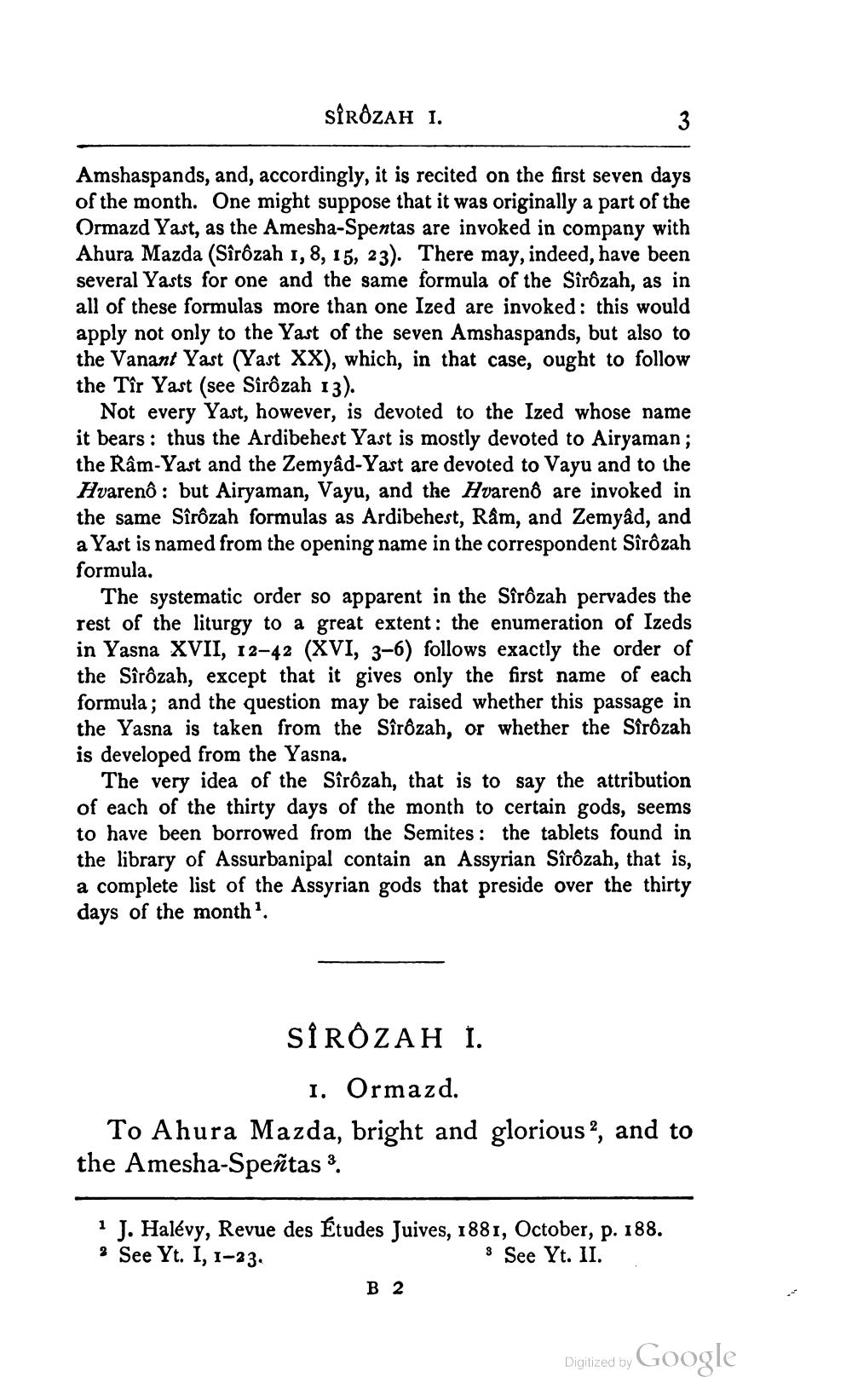________________
SÎRÔZAH 1.
Amshaspands, and, accordingly, it is recited on the first seven days of the month. One might suppose that it was originally a part of the Ormazd Yast, as the Amesha-Spentas are invoked in company with Ahura Mazda (Sîrôzah 1, 8, 15, 23). There may, indeed, have been several Yasts for one and the same formula of the Sîrôzah, as in all of these formulas more than one Ized are invoked: this would apply not only to the Yast of the seven Amshaspands, but also to the Vanant Yast (Yast XX), which, in that case, ought to follow the Tîr Yast (see Sirôzah 13).
Not every Yast, however, is devoted to the Ized whose name it bears: thus the Ardibehest Yast is mostly devoted to Airyaman; the Râm-Yast and the Zemyâd-Yast are devoted to Vayu and to the Hvareno: but Airyaman, Vayu, and the Hvarenô are invoked in the same Sîrôzah formulas as Ardibehest, Rám, and Zemyâd, and a Yast is named from the opening name in the correspondent Sîrôzah formula.
The systematic order so apparent in the Sîrôzah pervades the rest of the liturgy to a great extent: the enumeration of Izeds in Yasna XVII, 12-42 (XVI, 3–6) follows exactly the order of the Sîrôzah, except that it gives only the first name of each formula; and the question may be raised whether this passage in the Yasna is taken from the Sîrôzah, or whether the Sîrôzah is developed from the Yasna.
The very idea of the Sîrôzah, that is to say the attribution of each of the thirty days of the month to certain gods, seems to have been borrowed from the Semites: the tablets found in the library of Assurbanipal contain an Assyrian Sîrôzah, that is, a complete list of the Assyrian gods that preside over the thirty days of the month .
SI RÔZAH 1.
1. Ormazd. To Ahura Mazda, bright and glorious?, and to the Amesha-Speñtas 3.
* J. Halévy, Revue des Études Juives, 1881, October, p. 188. 2 See Yt. I, 1-23.
s See Yt. II. B2
Digitized by Google




